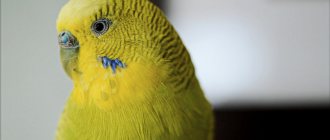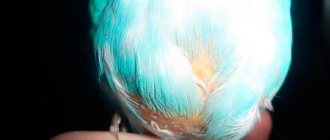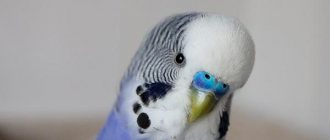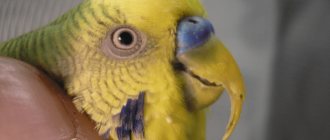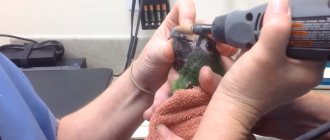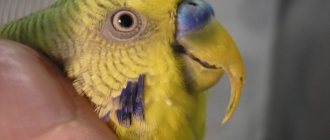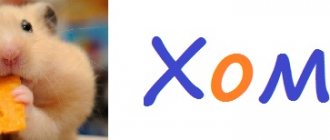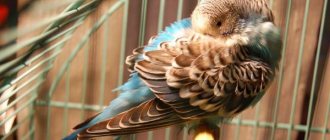Features of treatment for hormonal imbalance
If growths occur in budgies, this often occurs due to a hormonal imbalance that occurs due to an incorrect diet.
The homeland of these bird representatives is Australia. In the wild, they prefer to eat only dry grain, green parts of shoots, and fruits. It is not advisable to give your bird a large amount of green food and sprouted grains. Often, many owners feed parrots with food that they eat themselves, for example, cottage cheese and boiled eggs. This food can be eaten by parrots that live in pairs or flocks. But birds that live alone should not be given this food. Proteins of animal origin can cause a hormonal imbalance in the body, and ultimately cause a growth and delamination of the beak.
If a parrot's beak turns black and the cornea grows, then nutritional adjustments are required. After this, after some time the growth will come off on its own. But in addition, to alleviate the condition of the bird, it is better to lubricate the growth and beak with a small amount of Vaseline.
Prevention
To minimize the effects of a delaminating beak on your wavy friend, you need to put in a little effort:
- humidify the air in the room by all available means;
- feed the parrot with the right mixtures, do not forget about juicy fruits and nuts;
- take a course of vitamins twice a year;
- replace plastic perches with wooden ones;
- monitor the presence of mineral stone in the cell;
- add branches of deciduous trees;
- at the first signs of illness, quarantine the bird;
- provide a light regime so that the pet is exposed to natural light for at least 8 hours a day.
Every budgerigar's beak peels off at least once in its life. If the bird is in good hands, the owner will provide him with help in time. But when a problem appears again and again, you need to take the solution seriously. Depending on the scale of the task, the outcome will be different, but the parrot must be provided with optimal living conditions.
If you liked the article or have something to add, then leave your comments and also join our VKontakte group.
A parrot has a long beak: what to do?
Sometimes the beak flaps grow too quickly: they curl, cling to each other and cause a lot of discomfort to the bird. The overgrown stratum corneum will continue to grow, so the beak needs to be trimmed. There are several reasons for this phenomenon: metabolic disorders, feeding exclusively with soft food, previous beak trimming. It is better to entrust the “haircut” to a specialist, since the beak of the wavy is riddled with nerve fibers and blood vessels - you can accidentally injure it. After the operation, the bird is given only soft food for 2-3 days.
Getting rid of ticks
Tick beetles parasitize around the eyes, cere, beak, and cloaca. They cause itching and deformation of the beak. Gnawing labyrinths in it, mites disrupt the structure. If measures are not taken, the deformation may become irreversible. When there are several birds in a cage, the sick individual should be isolated. It will be necessary to include vitamins, minerals and beneficial elements in his diet. All perches and toys in the cage of a sick bird should be made of plastic; mites cannot live in this material. It is also advised to carefully treat the injured parrot with soapy water and a disinfectant.
Treatment is carried out by lubricating the affected areas with aversectin ointment. Use it no more than once every three days. Apply until signs of the tick disappear completely, and for several days after for prevention. To prevent the reappearance of ticks, you should:
- Clean the cage regularly.
- Remove old branches and pour boiling water over new ones before placing them in the cage.
- Disinfect toys and accessories.
As you can see, proper care of your pet can prevent the development of most possible ailments.
Sprawl
The growth of horny plates is affected, first of all, by the lack of hard material. In nature, parrots move freely, tugging at twigs and sorting through stones. They walk along tree rhizomes and climb trunks. The beak and claws wear down naturally. At home, birds are deprived of this opportunity. Smooth cage bars and plastic perches do not contribute to beak shortening.
Other reasons for the rapid regrowth of plates:
- excess macronutrients;
- slow metabolism;
- abundance of fats in the feed;
- infections;
- diseases of internal organs;
- hormonal disbalance.
Due to increased growth of the beak, feeding problems may arise: the long part will interfere with taking food. The bird won't even be able to scratch itself normally. Of course, the pet will try to adapt to the current situation, but it will lose its usual comfort.
The owner should contact a veterinarian. You can try to trim the keratoid plate yourself, just so that the parrot’s beak does not crack. The manipulation is carried out with a nail clipper, having previously marked the place of shortening.
Attention! A sharp instrument must be handled carefully so as not to touch blood vessels. If blood does flow, it is stopped with a solution of hydrogen peroxide.
Causes
Normally, a parrot's beak is smooth, strong and shiny, but it is possible that it may become dull and flake. The cornea is constantly growing, breaking off at the edges, old particles are replaced by young cells. If you do not take into account the natural growth factor, there are certain circumstances in which the formation of keratoid tissue is disrupted.
Then you have to think about why the beak suddenly peels off and how to fix it.
There are several reasons for defects to appear:
- power supply errors;
- conditions of detention;
- injuries;
- diseases.
An unbalanced diet leads to improper metabolism. Lack or excess of vitamins has equally bad effects on the functioning of internal systems. Monotonous grain feed and lack of fresh vegetables in the diet provoke vitamin deficiency. The lack of minerals affects the appearance: the beak flakes and peels, feathers fall off, and wounds appear on the skin.
Attention! Indulging in soft food leads to weakening of the muscles and edges of the jaw bones. Due to lack of work, the horny cover becomes thinner, flakes, and cracks.
Unsatisfactory microclimate parameters are a direct path to the budgerigar’s beak beginning to peel off. When air humidity is low, the shells dry out and cracks appear on them, which increase with feeding. The owner's illiteracy in keeping poultry also plays a role. If a pet is kept in a plastic cage with polymer perches and is not given wooden toys or twigs, it cannot sharpen its beak.
Parrots get injured during conflicts with their cagemates and injure themselves when trying to bite a hard object. After hitting your head against a wall or mirror, blood circulation in the vessels is disrupted and the horny areas peel off.
One of the reasons why a parrot's beak peels and peels is the disease knemidocoptic mange. Scabies mites parasitize the skin and stratum corneum, destroying the structure of the epidermis. Severe itching occurs, which can result in tissue cracking, as the bird is constantly itching.
Softening
Another trouble that can happen to a parrot is a softening of the beak. This occurs when there is a lack of calcium and B vitamins. In addition, the stratum corneum softens under the influence of fungi or due to infections - viral, bacterial. Tissues become brittle and mobile. The bird protects its beak and cannot peck grain or care for its feathers. This condition is dangerous due to the presence of microcracks into which food gets, decomposes and serves as a source of infection.
Hypovitaminosis is corrected with the help of veterinary drugs: Gamavit, Beaphar (Beafar), Vinka (Vinka). If the defect appears due to an infectious disease, diagnosis and treatment are carried out by a veterinarian.
Attention! Until the beak gets stronger, the parrot needs to be given semi-liquid, crushed foods. Cracks should be treated with medicine, after removing food particles.
How to treat a peeling beak
Actions directly depend on the cause of the disease, so the first step is to call a veterinarian or take your feathered friend to an appointment at a specialized clinic.
- Ornithologists say that the most common reason is a simple failure to maintain the required humidity level. If this is the case, simply humidify the air in the room.
- If you have eating disorders, take care of your pet’s balanced menu. In addition to purchased food, the diet of parrots should include raw vegetables, fruits, and herbs.
- If you have vitamin deficiency (in addition to the medications prescribed by your doctor), you can treat your bird to cottage cheese or a hard-boiled egg. In veterinary pharmacies and pet stores you can find food enriched with microelements. A piece of sepia (mineral stone) will greatly benefit the parrot.
- In case of illness, you should strictly adhere to the course of treatment prescribed by your veterinarian. For the benefit of your pet, do not buy medications at random; you are more likely to harm the parrot than to solve the problem yourself.
If there is excessive growth of bone tissue, as well as in a situation where the parrot’s beak is broken or cracked, you should consult a doctor. This point cannot be ignored, as this threatens to break off the beak.
Attention! Do not try to pick up the scales with tweezers and remove them yourself. Blood vessels are located under the stratum corneum, so careless actions can cause severe pain and bleeding in the bird. Leave it to a specialist.
It happens that a bird breathes through its beak. This behavior does not mean that the parrot has broken its beak. This is a sign of another kind of problem (cold, rhinitis, sinusitis, inflammation of the trachea, even stress).
Why does delamination occur?
When a pet gets sick, its beak becomes thin and fragile. Burrs are observed in some areas. The wax is covered with barely noticeable cracks and appears rough to the touch.
Beak separation can occur for a number of reasons:
- Lack of vitamins and minerals in the bird’s diet.
- Genetic predisposition.
- Bodily injury.
- Knemidocoptosis.
- Unfavorable indoor microclimate.
In some individuals, the beak grows too quickly, acquiring a hypertrophied shape. The bone tissue simply does not have time to form normally, so it begins to delaminate.
Injury
If a pet is injured, damaging its beak in some way, then during the regeneration process the surface is overgrown with a multi-layer protective film. In case of severe fractures, the outermost part dries out, and the remaining part also becomes covered with a white coating.
Knemidocoptosis
The disease gets its name from a type of tick. The activity of insects is manifested in the deformation of the beak, its peeling and delamination.
In addition to the unpleasant visual part, mites cause severe pain to the bird, which is why it constantly itches, sleeps anxiously and is in a state of stress.
If you carefully examine the bird, parasites can be seen at the base of the beak, as well as along the perimeter of the eye sockets. In the course of its activity, the pest creates a branched system of passages, which leads to the destruction of the bone structure, as well as to the appearance of delaminations.
Unbalanced diet
For the development of bones and beak in particular, the budgerigar's body requires a sufficient amount of calcium. If there is too little of it in food or for some reason the gastrointestinal tract does not absorb this element well, then hard tissues begin to peel off.
Lack of other vitamins and minerals can also cause beak splitting, but to a lesser extent. Therefore, nutrition must be balanced. Eating dry food alone is not enough: the diet must be diluted with fruits, vegetables and other products.
It is also useful to read: Fleas on a budgie
